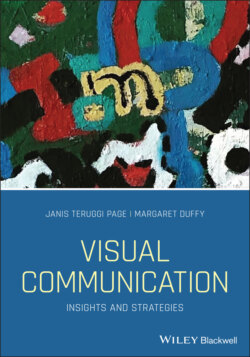Читать книгу Visual Communication - Janis Teruggi Page - Страница 24
FOCUS: Trump's Hand Gestures
ОглавлениеSome scholars attribute the success of Trump's candidacy in the 2016 Republican primary in part due to its value as comedic entertainment. One study, “The hands of Donald Trump: Entertainment, gesture, spectacle” (Hall et al., 2016), analyzed the populist candidate's comedic performances during the Republican primaries. The study proposed that in an era when style attracts more attention than content, Trump took this characteristic to new heights. The authors concluded that Trump's unconventional political style, particularly his use of gesture to critique the political system and caricature his opponents, created a visual spectacle. Through his exaggerated depictions of the world crafted with his hands, he succeeded in ignoring political correctness and disarming his adversaries – elemental to bringing momentum to his campaign. Among Trump's many hand gestures, the study notes Trump's use of the pistol hand, his signature gesture used on The Apprentice with his catchphrase “You're fired!” to fire unworthy contestants. When Trump used the pistol hand, it conveyed arrogance, sovereign power, and commanding force – as seen in the photo below:
Source: AP Images/Stuart Ramson.
The gesture is understood through its gun shape and its associated swiftness and precision of striking down an unworthy opponent. Yet the gesture is also playful: when Trump thrusts his hand forward to mimic the firing of a gun, he brings a child's pantomime of shooting to the firing of an adult in an entrepreneurial battle or the dismissing of an opponent in a political arena.
Media critic Stuart Hall (1997) writes that “culture is about shared meanings” and “primarily, culture is concerned with the production and the exchange of meanings … between the members of a culture or group” (p. 2). He suggests that people who are in the same culture will tend to interpret the world in generally similar ways while warning that things or actions cannot have stable meanings. Hall tells us that meanings are produced in multiple ways: through personal interactions, through our use of media and technology, and in what we create and how we share those creations:
Meaning is also produced whenever we express ourselves in, make use of, consume or appropriate cultural “things;” that is, when we incorporate them in different ways into the everyday rituals and practices of daily life and in this way give them value or significance. (p. 3, 4)
Human beings have always created and responded to shared and differing interpretations of reality. All societies have systems of belief that carry values and seem natural to those who are part of that society. Like all cultural products, visuals are created within “the dynamics of social power and ideology” (Sturken and Cartwright, 2009, p. 22). Those with greater material wealth or socioeconomic status generally have more resources and abilities to use and influence the creation and dissemination of images and video. Thus, their worldviews are likely to have more prominence and influence than those from people with fewer resources. This means that we experience images within changing social contexts that can change rapidly and that the meanings we assign to them aren't neutral. Instead, they carry values and privilege certain interpretations over others.
